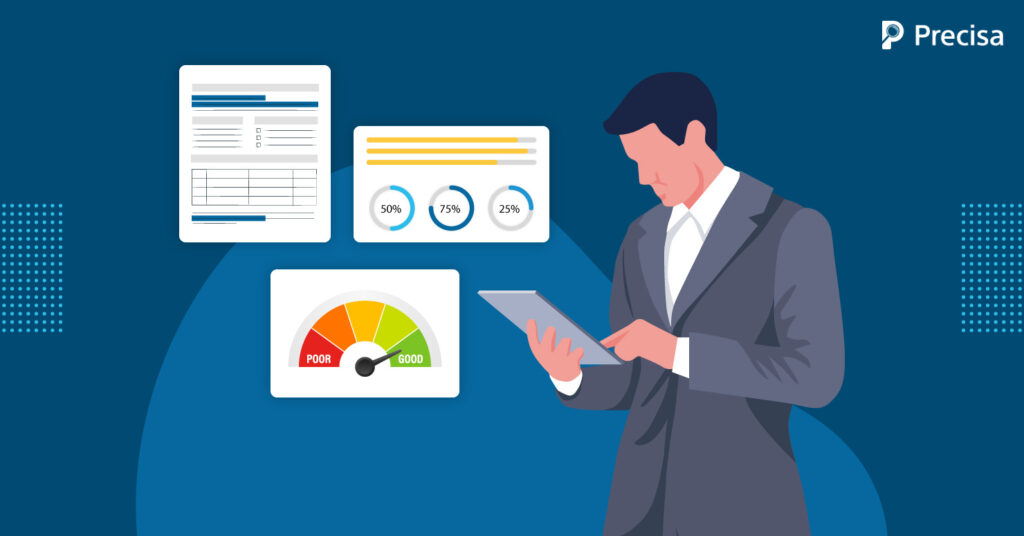How to Make Your Corporate Credit Appraisal More Secure in 2022

Bad loans have always been bad business for lenders, but financial institutions are increasingly tightening their purse with the pandemic exacerbating market volatility and geopolitical tensions.
Although commercial loans are critical to bank asset portfolios, and the commercial lending market is set to grow at a CAGR of 13.1% over the next decade—these financial institutions are progressively adopting a wary outlook toward businesses asking for credit.
Banks are becoming more stringent with their credit analyses and appraisal processes simply to safeguard themselves from businesses with poor credit histories which may be unable to service loans.
While debt markets foster economic growth, credit analysis and sanctioning are crucial to their functioning. Assessing credit risks, pricing credit according to prevailing market conditions, and efficiently allocating capital all determine the fate of lenders.
Therefore, financial soundness and repayment ability are core to corporate credit appraisals. We take you through the hurdles faced during the analysis and approval stages and how financial institutions can optimise and secure their appraisals.
Issues With the Traditional Credit Appraisal Process
With rampant credit delinquency, sophisticated frauds, and skyrocketing costs, both credit analyses and appraisals need to evolve from the mostly paper-based system currently in place.
In addition, commercial loans are fraught with the logistical nightmare of shuffling an enormous amount of paperwork around a system with multiple entry points and multiple decision levels.
Unfortunately, a system with so many moving parts is bound to have a few hiccups, namely:
Operational challenges
The core of operational snags lies in data inaccuracy, data integrity loss, and data loss through gaps in collation. In addition, a large part of the credit appraisal process depends on financial statements and management, market, and technical information about the business.
Data mentioned above could either arrive in bad shape (incoherent or incomplete) or be rendered after moving through so many hands.
These disparities severely limit the managerial visibility of the loan process as a whole and the scope of the appraisal, thereby leading to regulatory defaults.
In addition, the analytical process is hampered because of bad data, low integrity, and the slow-moving chain that carries it, which significantly lengthen turn-around times.
High costs and poor pricing decisions
The liberalisation of the financial sector brings the pressure of profitability for banks and financial institutions, only enhanced by the drain on resources brought about by slow credit appraisals. An inefficient system costs money every step of the way:
- High costs in primary data acquisition and analysis.
- Regulatory compliance compromises and the ensuing fees.
- Inaccurate credit pricing due to poor transparency control while deciding loan structure and repayment capacity across the loan process.
How Can Financial Institutions Overcome These Problems to Secure Appraisals?
Determining creditworthiness and financial soundness is crucial for lenders, as they are directly impacted by borrower repayment behaviour and credit history.
In addition, changes in markets, risk factors, and business operations necessitate a more efficient and transparent approach to corporate credit sanctioning.
Banks and financial institutions can do this in two ways:
Automate processes to ensure accuracy
Solving the hurdle of poor data quality and inaccuracies rides on adopting a stronger appraisal process, which automates document generation, validation, organisation, and exchanges to ensure data reliability.
This makes for a faster and more secure way to capture data and streamlines operations while creating a trustworthy audit trail of documents.
Data such as income statements, balance sheets, and financial reports become standardised, accessible, and easier to analyse.
Shift to smarter analytics to improve credit decisions
Automating data collection and storage will only help significantly when coupled with automated analytics. This reduces human error, dramatically lowers TAT and delivers reliable results based on in-depth and multidirectional scrutiny of all relevant documents.
Relying on analytical software programs helps banks and financial institutions make better pricing and structural decisions during credit appraisals while also ensuring regulatory compliance and risk mitigation.
Also read: How Can Banks Speed up and Secure Loan Disbursal?
How Can Precisa Help Banks Address Oversights in the Appraisal Process?
As evidenced above, bank statements are essential to consider during credit appraisals. Still, manual analyses aren’t quite the right way to determine the business trends and risks hidden in them.
Precisa is a robust bank statement analyser that will reduce processing time, generate risk and volatility scores, identify irregularities, and track transactional patterns and account aggregations.
This intuitive tool provides valuable insights into the financial health of potential borrowers, picking up on anomalies that may slip through the cracks.
Experience the product and book a demo today!



